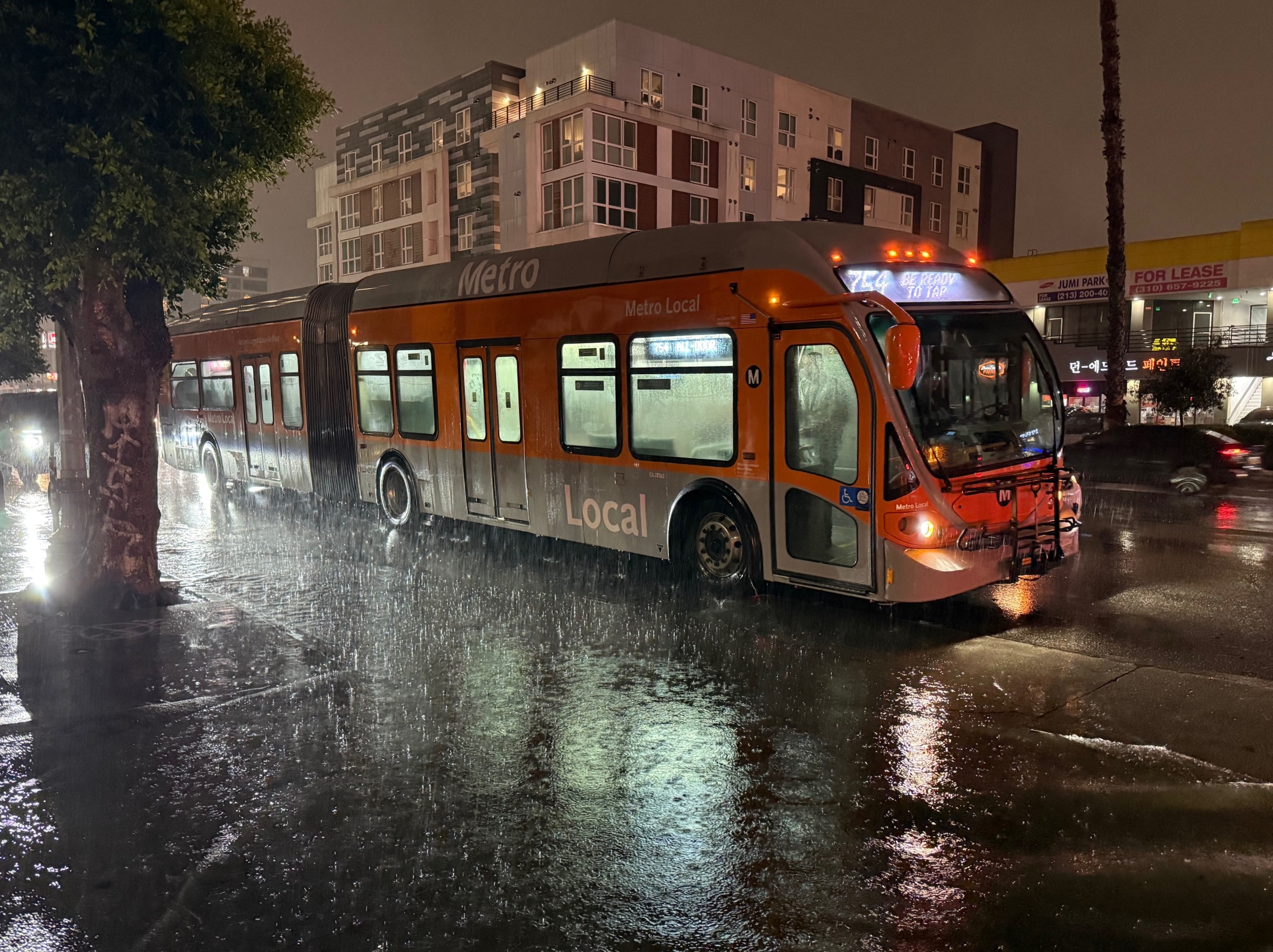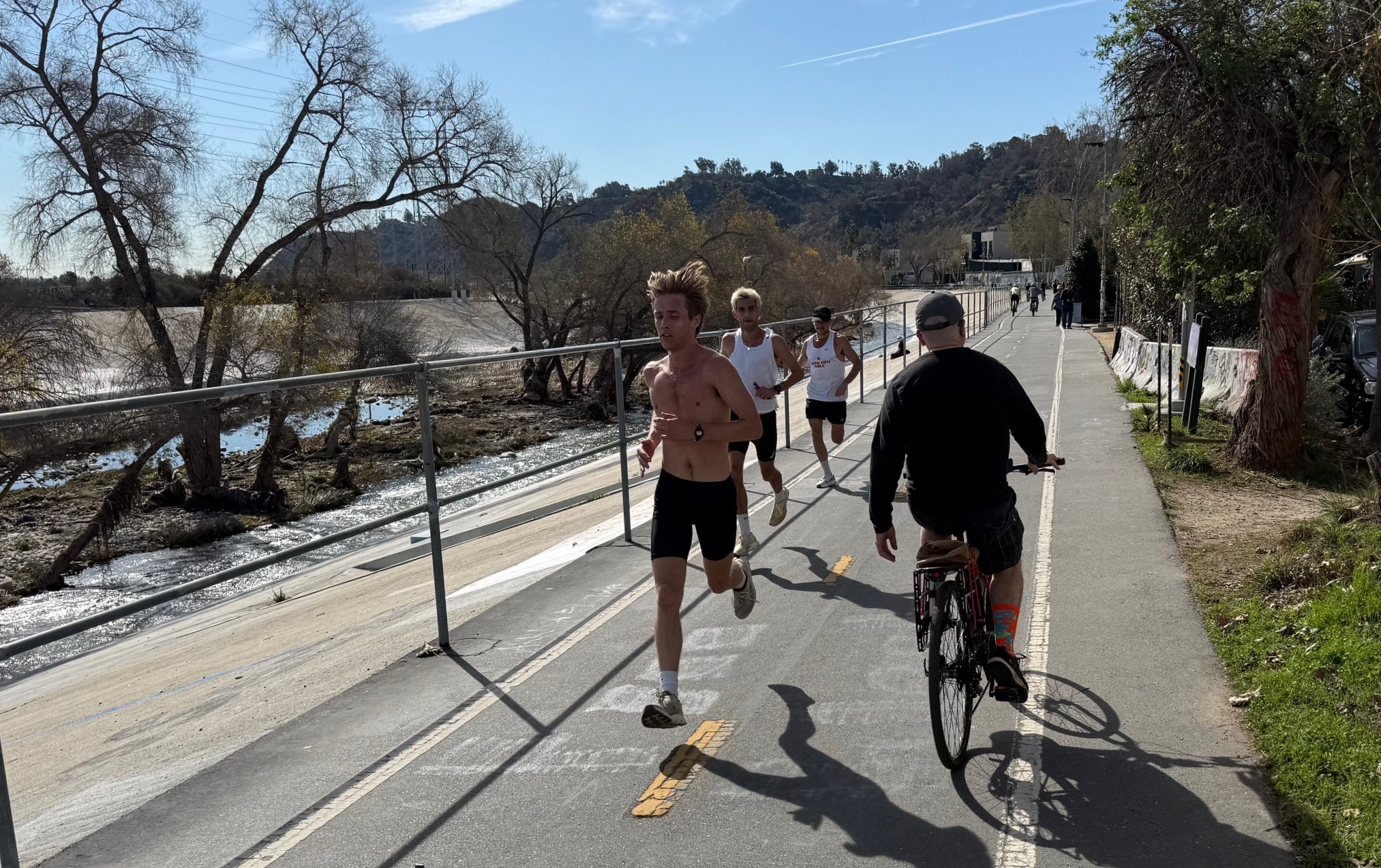
The California Bicycle Coalition launched an unusual campaign this week to inform local leaders that building protected bikeways is not only allowed, but encouraged.
In the past designing and building separated or protected bike lanes was deemed too difficult or impossible because of Caltrans' disapproval. The state planning department, although it doesn't control every local street and road, sets standards that local planners and engineers tend to follow. That has essentially meant that any innovative street design—like protected bike lanes—has needed strong local champions, extreme tenacity, and more patience than it normally takes to just follow a pre-approved Caltrans street design.
But the Protected Bikeways Act of 2014 changed that by requiring Caltrans to come up with design guidelines for separated bike lanes on which bicyclists can feel safe.
Since then, Caltrans has been allowing locals to use the NACTO urban street design and bikeway design guidelines, incorporated protected bikeways into its Highway Design Manual, and written its own Class IV Bikeway Guidance. It also has issued other publications encouraging innovative street designs such as its Complete Streets Implementation Plan—and let's not forget it created a goal of tripling the number of trips made by bicycle in California by 2020.
CalBike wants to make sure local transportation decision makers are aware of these changes and that they can incorporate separated or protected bikeways into their plans. Working with Alta Planning, CalBike leaders designed a brochure and is mailing it out to over 250 leaders throughout the state, including city traffic engineers, mayors, city managers, public works directors, and elected officials.
The brochure, Class IV Separated Bikeways: Approved for Use in California, is a four-page introduction to separated bikeways, their definition and benefits, as well as the basic fact that they are approved by Caltrans. It also contains lots of great photos, and a list of the California cities that have already built protected bike lanes—a list that is rapidly becoming out of date, as more cities build them. The cover, seen above, features a picture of protected bike lanes in Modesto.
The brochure can be found here [PDF] and will be available for download soon on the CalBike website, in case Streetsblog readers want to forward one to their own city's planners.
“This is not meant as a design guide,” said CalBike Executive Director Dave Snyder. “It's meant to belay concerns that protected bike lanes are still an experimental feature, and to remove any doubt that they're authorized” by Caltrans.
Ultimately, said Snyder, advocates want separated bikeways to be “the new normal” where they are appropriate. But first decision makers need to know the option exists.
“Protected bike lanes are a key reason why it’s so safe, comfortable, and convenient to ride a bike in cities like Amsterdam and Copenhagen,” said Snyder. “We can have that here too, but first we need to build them.”
“In our work planning, designing, and implementing separated bikeways across the country, we have seen the many positive benefits including economic, health, and safety firsthand,” said Bryan Jones, Principal of Alta Planning and Design, who helped develop the brochure. “Implementation of separated bikeways in cities throughout California will be key to the success of achieving Caltrans’ vision of tripling ridership on bicycles.”






